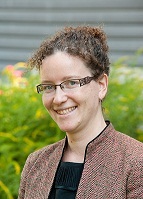Abstract:
Patterns of Innovation at NASA: The Need to Move Beyond Stages and Gates
Despite a rich legacy of impressive technological accomplishments, in recent years, the ability of government space agencies to deliver on their promises has increasingly been called into question. Although multiple acquisition systems and organizational structures have been tried, there remains a fundamental lack of understanding of how new technology development can, and should, be encouraged in this unique market structure and product context. This research seeks to address that gap by developing a more nuanced, and empirically grounded, explanation.
R&D management practices typically conceptualize complex product innovation as a Stage-Gate process whereby novel concepts are matured through a succession of development stages and progressively winnowed down at each sequential gate. This view implicitly assumes that maturity is a monotonically increasing function of the technology, and that partially matured technologies can be restored from the “shelf” for future maturation, barring obsolescence. However, based on evidence from six detailed process histories of instances of innovation in NASA’s science directorate – including more than 100 hours of interviews, 150 archival documents and 2 months of informal observations – this research demonstrates how, in practice, the pathways taken by new capabilities do not respect these assumptions, with important implications. For example:
• Rather than being a monotonically increasing function in time, particular innovations draw simultaneously from funding mechanisms targeted at different Technology Readiness Level (TRL) ranges, and loop back to win “early stage” grants decades into their development when system level progress is stymied. As a result, increases to early stage R&D funding may not reach the targeted concepts.
• Rather than being a purposeful management decision, getting shelved is something that happens to innovation teams due to the lack of co-timing of technical breakthroughs and mission opportunities. As a result, maintaining a shelved capability is as much a matter of keeping the team together as it is a question of technical obsolescence.
The thesis argues that the observed dynamics can be better explained by four epochs of persistent, stable, and identifiable behavior, punctuated by transition inducing shocks. Acting individually, or in combination, these shocks can induce transitions from any one epoch to another. This new Epoch-Shock formulation enables a rethinking of the policy problem. Where the Stage-Gate model leads to an emphasis on centralized flow control, the Epoch-Shock model acknowledges the decentralized, probabilistic nature of key interactions and highlights which aspects may be influenced. These findings are considered both as NASA-specific recommendations, and more generally in terms of their implications for complex product innovation in a monopsony market.
Biography:
 Dr. Zoe Szajnfarber
is an Assistant Professor of Engineering Management and Systems Engineering at the George Washington University. Her research seeks to understand the fundamental dynamics of innovation in technology-intensive governmental organization, as a basis for decision-making. She received her bachelor's degree in Engineering Science from the University of Toronto and conducted her graduate work at the Massachusetts Institute of Technology, earning dual masters' degrees in Aeronautics & Astronautics and Technology Policy and a Ph.D. in Engineering Systems. Her dissertation focused on technology infusion at NASA and involved substantial field work at the Goddard Space Flight Center. Outside of academia, Dr. Szajnfarber has worked as a systems engineer at MDA Space Missions (Canadarm Program) and Dynacon Inc. (Microsatellites); and as a researcher at the European Space Agency (Advanced Concepts Team).
Dr. Zoe Szajnfarber
is an Assistant Professor of Engineering Management and Systems Engineering at the George Washington University. Her research seeks to understand the fundamental dynamics of innovation in technology-intensive governmental organization, as a basis for decision-making. She received her bachelor's degree in Engineering Science from the University of Toronto and conducted her graduate work at the Massachusetts Institute of Technology, earning dual masters' degrees in Aeronautics & Astronautics and Technology Policy and a Ph.D. in Engineering Systems. Her dissertation focused on technology infusion at NASA and involved substantial field work at the Goddard Space Flight Center. Outside of academia, Dr. Szajnfarber has worked as a systems engineer at MDA Space Missions (Canadarm Program) and Dynacon Inc. (Microsatellites); and as a researcher at the European Space Agency (Advanced Concepts Team).
 Dr. Zoe Szajnfarber
is an Assistant Professor of Engineering Management and Systems Engineering at the George Washington University. Her research seeks to understand the fundamental dynamics of innovation in technology-intensive governmental organization, as a basis for decision-making. She received her bachelor's degree in Engineering Science from the University of Toronto and conducted her graduate work at the Massachusetts Institute of Technology, earning dual masters' degrees in Aeronautics & Astronautics and Technology Policy and a Ph.D. in Engineering Systems. Her dissertation focused on technology infusion at NASA and involved substantial field work at the Goddard Space Flight Center. Outside of academia, Dr. Szajnfarber has worked as a systems engineer at MDA Space Missions (Canadarm Program) and Dynacon Inc. (Microsatellites); and as a researcher at the European Space Agency (Advanced Concepts Team).
Dr. Zoe Szajnfarber
is an Assistant Professor of Engineering Management and Systems Engineering at the George Washington University. Her research seeks to understand the fundamental dynamics of innovation in technology-intensive governmental organization, as a basis for decision-making. She received her bachelor's degree in Engineering Science from the University of Toronto and conducted her graduate work at the Massachusetts Institute of Technology, earning dual masters' degrees in Aeronautics & Astronautics and Technology Policy and a Ph.D. in Engineering Systems. Her dissertation focused on technology infusion at NASA and involved substantial field work at the Goddard Space Flight Center. Outside of academia, Dr. Szajnfarber has worked as a systems engineer at MDA Space Missions (Canadarm Program) and Dynacon Inc. (Microsatellites); and as a researcher at the European Space Agency (Advanced Concepts Team).